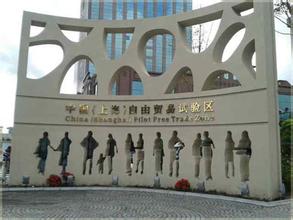The Gavel – Nov 2014 – Shanghai Free Trade Zone; One Year On
On August 22, 2013, the State Council approved the establishment of the China (Shanghai) Pilot Free-Trade Zone (SFTZ). Officially launched on September 29, 2013 with the backing of Chinese Premier Li Keqiang, it is the “first free-trade zone in mainland China”. Covering an area of 29 square kilometers, it integrates the four existing bonded zones in the district of Pudong: Waigaoqiao Free Trade Zone, Waigaoqiao Free Trade Logistics Park, Yangshan Free Trade Port Area, and the Pudong Airport Comprehensive Free Trade Zone.
Foreign trade in SFTZ reached ¥747.5 billion ($121.7 billion) during its first year of operation, mainly from the European Union, Southeast Asia, Taiwan, Hong Kong, the United States and Japan. Over 12,000 firms, both Chinese and foreign, have been established since the zone’s launch, illustrating entrepreneurs’ enthusiasm to try and gain a foothold in the financial hub of Shanghai, lured by promises of free trade, greater financial opening and fewer government controls in business activities.
As a result of the rush to the Zone, in the past year industrial property (warehouses) have witnessed soaring rental prices in comparison with elsewhere in Shanghai.
Main Policies for Company Management
China set up the first SFTZ as a testing ground for economic reforms; then Tianjin received the approval for another free trade zone. A set of pilot measures has been adopted by SFTZ in such areas as business registration, cross-border financing and investment and customs clearance.
SFTZ cancels out a number of financial requirements for setting up a company in China, including the minimum registration capital and the capital verification.
With regards to disputes, SFTZ features a distinctive mechanism for dispute resolution. Arbitration in SFTZ is governed by a separate set of arbitration rules issued by the Shanghai International Arbitration Center (SHIAC).
The Zone is a blessing for foreign investment. On September 18, 2013, the State Council of China announced a total of 18 services and industries to receive relaxed policies in the Zone. Furthermore, a Negative List was released, which detailed 16 industries, from which foreign companies remain excluded, even in the SFTZ. The Negative List was updated in July 2014, further relaxing restrictions on foreign investment in the financial industry, manufacturing, and transportation services.
On the eve of the one-year anniversary of SFTZ, the government further liberalized business for foreign companies in the pilot zone. The State Council decided to temporarily adjust 27 items in six regulations regarding international shipping, salt, automotive, civil aviation, infrastructure development and others.
Solely-owned foreign companies in the SFTZ will be allowed to enter sectors such as R&D of facilities for high-speed railways, passenger trains and inter-city rails, designing yachts and luxury liners, and development and manufacture of parts of civil airplane engines. They are also allowed in constructing and managing local railways and ferries as well as bridges and tunnels attached to these projects. Feedback from foreign companies in the SFTZ is mainly positive as it has become easier for them to enter the Chinese market.
SFTZ has been and will be the new economic impetus both for China’s development and for the world. Positive effects on economy and society have been discovered in this zone, with radiation effects on the surrounding areas and the entire country.
Disclaimer
This article is intended solely for informational purposes and does not constitute legal advice. Although the information in this article was obtained from reliable official sources, no guarantee is made with regard to its accuracy and completeness.







